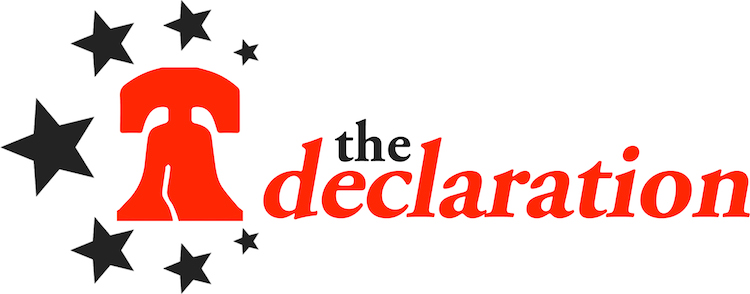
Philadelphia Energy Solutions owns and operates the largest refinery on the east coast. Photo: Dustin Slaughter
By Dustin Slaughter
Updated:
A smaller fire occurred at the Philadelphia Energy Solutions refinery earlier today. This marks the second incident in four days.
Daily News columnist Will Bunch took note of the latest incident; the only other note made was a tweet from the city’s Office of Emergency Management. Our report from yesterday is below.
Between January and April of this year, Philadelphia Energy Solutions (PES) was cited for 20 separate air quality violations, according to a seven page “Notice of Violation” obtained by The Declaration.
The continued danger the refinery poses to surrounding communities was highlighted this weekend when a pump sparked a fire, marking the third ‘flare-up’ this year alone.
The Notice of Violation (NOV) is based on mandatory refinery malfunction reports submitted by PES to the Department of Public Health’s Air Management Services division in January, February, March, and April. The document details the dates and times when the east coast’s largest oil refinery violated its operating permit, as well as legally permissible pollution amounts.
In an emailed statement to The Declaration, city spokesperson Jeff Moran claimed “the violations cited in this NOV are not considered serious,” adding that “a review of the air pollution data for various air monitors located in and around South Philadelphia showed no anomalous increase of air pollutants on the days that the violations occurred.”
Considering the over 20 violations his agency charged the refinery company with, AMS’ statement is surprisingly muted. Moran states the company will be meeting with the city “in the near future” to discuss the latest round of infractions.
Moran also claimed that “the conditions that led to the cited violations [at] the Philadelphia Refinery have been corrected.”
That last assurance is clearly premature, however. A pump fire at the refinery this past Friday sent thick black smoke billowing into South Philadelphia, prompting renewed fears from area residents.
Neighbors told NBC 10 they could “immediately smell the blaze” and that “a large fire is always in the back of their minds.”
“I think about it all the time, you know, that it’s gonna blow up,” one South Philly resident told NBC reporter Randy Gyllenhaal. “It’s scary, you know? Any fire is scary.”

A South Philadelphia resident recorded the latest PES refinery accident on her cell phone, Friday, May 22nd 2015. Image: NBC 10 Philadelphia.
The Environmental Protection Agency has established rules setting limits on the amount of “criteria pollutants,” such as carbon monoxide, that refineries are permitted to release into the air. These rules are known as National Ambient Air Quality Standards. According to the federal agency’s website, the hourly ‘safe’ limit for carbon monoxide – a pollutant repeatedly mentioned in the PES violation notice – is 35 parts per million (ppm). The document indicates that for three hours alone on March 21st, “hourly concentrations ranged from 643 ppm to 1,000 ppm.” [emphasis mine].
That is just one of nine carbon monoxide breaches contained in the notice.
EPA Region III monitor Paul Wentworth did not respond to repeated requests for comment regarding any aspect of this story.
The company, led by CEO Phillip Rinaldi – who also serves as an economic policy advisor for Democratic mayoral nominee Jim F. Kenney – submitted what is known as an Initial Public Offering (IPO) in February. If successful, the move would secure hundreds of millions of dollars from Wall Street to greatly expand refinery operations in South Philly, as part of a ‘vision’ for transforming Philadelphia into a major ‘energy hub’. It is unclear whether the latest round of violations will impact PES expansion plans, if at all.
Due to its recent IPO, the company is prohibited from offering any comment regarding its operations, although Friday’s accident apparently forced the company to tell NBC 10: “Mechanical failures caused a charge pump to ignite.”




Thanks for this coverage!
LikeLike
You’re quite welcome! There will be more to come.
LikeLike
The violations appear to be split into three sections: high H2S in fuel gas, which really isn’t a major concern but likely would have resulted in slightly increased Sulphur Dioxide emissions, opacity incidents resulting from a string of FCC mishaps, and a few flaring incidents (probably the worst of them all if the flares are intermittent duty). It’s not unusual to have a couple of FCC incidents in a row as the units aren’t always easy to restart and the thermal cyclic and less stable conditions during start-up and shut-down often result in pump seal failures etc. Once they get stable operation and back to normal they may well not have another similar upsets for many months or even years.
I think it is also worth pointing out the CO emissions are measured in the stacks at a significant height and only measure the gases before they are released into the general atmosphere, therefore you really can’t compare direct stack emissions CO figures with normal ground-level air quality thresholds. Granted, there will likely be some correlation, but they are not one and the same.
It’s also worth noting that the relatively safe shutdown of a crude unit in response to a charge pump seal failure or similar (the most recent event) is a totally different situation to “it’s gonna blow up”.
For disclosure, I’ve no connection to PES but work in the Refining industry in another country.
LikeLike
Thanks so much for your input. I tried getting clarification from two agencies, but to no avail. I would like to include some of your remarks, and perhaps expand on some of them. Would you be willing to go on record?
LikeLike